 |
 |
 |
| |
TREATMENT WITH BEPIROVIRSEN (GSK3228836) LEADS TO HEPATITIS B SURFACE ANTIGEN (HBsAg) REDUCTION AND CYTOKINE/ CHEMOKINE RESPONSES LINKED TO INNATE AND ADAPTIVE IMMUNITY IN A PHASE 2a, RANDOMIZED, DOUBLE-BLIND, PLACEBO-CONTROLLED STUDY
|
| |
| |
AASLD 2021 Nov 12-15
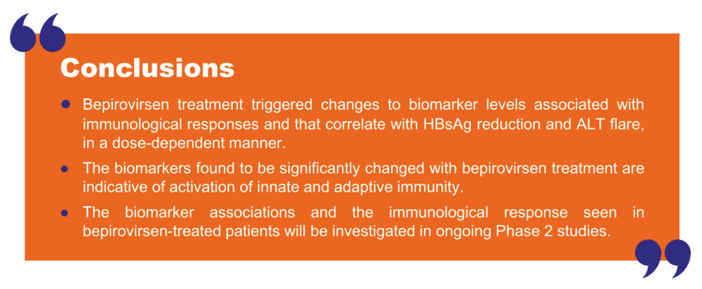
Jennifer Singh, Shihyun You, William Jordan, Avijit Ray, Yee Voan Teo, Adam Taylor, Melanie Paff and Dickens Theodore, GlaxoSmithKline
Background: Bepirovirsen (bepi, GSK3228836) is a modified antisense oligonucleotide targeting regions shared by all hepatitis B virus RNAs, including pregenomic RNA. This post hoc analysis evaluated the correlation of biomarkers with bepi-induced immune responses in patients with chronic hepatitis B receiving bepi in a Phase 2 clinical trial (NCT02981602).
Methods: This study analyzed plasma and serum from treatment-naïve and nucleos(t)ide (NA)-treated patients receiving placebo or bepi (3:1), administered on Days 1, 4, 8, 11, 15, and 22. Analysis included 30 patients (treatment-naïve: placebo n=6, bepi 150 mg n=6, 300 mg n=12; NA-treated: placebo n=2, bepi 300 mg n=4); the plasma analysis included only treatment-naïve groups. Plasma was collected at 0.5 (earliest time point used as reference for normalization), 4, 6, and 24 hours (h) post dose; serum on Days 1 (baseline), 2, 8, 15, 22, 23, 36, 57, 85, 113, and 211. Soluble proteins were evaluated using the Olink Target 96 Inflammation panel. A generalized linear mixed effects model was fit to compare changes from baseline at each time point. Mean fold changes (FC) and p-values were used for pathway analyses (MetaCore). Associations between bepi treatment, serum HBsAg, alanine aminotransferase (ALT), IFNg/CXCL10 signaling, and soluble proteins were analyzed.
Results: Plasma analysis: Multiple significant FC time courses were observed, some quickly at 4 h (eg, CCL11, CCL25); others first became significant at 24 h (eg, IFNg; TNFRSF9) post dose. Serum longitudinal analysis: Analytes with the greatest average FC expression were associated with adaptive immunity, IFNg signaling, and extracellular matrix remodeling. Some analytes showed an early response 24 h post dose at Day 2 and/or Day 23 (eg, IFNg; CCL19). Many remained significant, from reference time point, over prolonged periods (eg, CXCL10; IL10RA) to ≥Day 36 (timing of an ALT flare); some (eg, IFNg; CCL19) were upregulated in both plasma and serum. 27 analytes (eg, CXCL11; CXCL9) had a correlation coefficient >0.8 to HBsAg, ALT, IFNg/CXCL10 responses. ALT flare correlated with proteins involved in downstream IFNg signaling.
Conclusion: Bepi triggered altered levels of biomarkers associated with immunological responses that may correlate with HBsAg reduction, ALT flare, and IFNg/CXCL10 signaling. These biomarker associations and the immunological response seen in bepi-treated patients will be investigated in Phase 2 studies. Funding: GSK (205695).
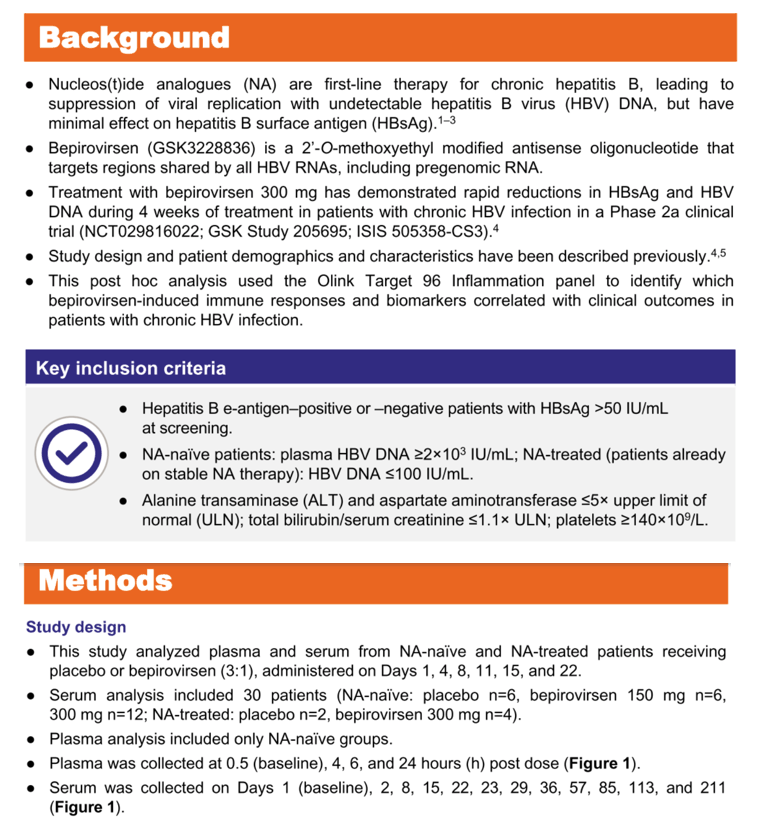

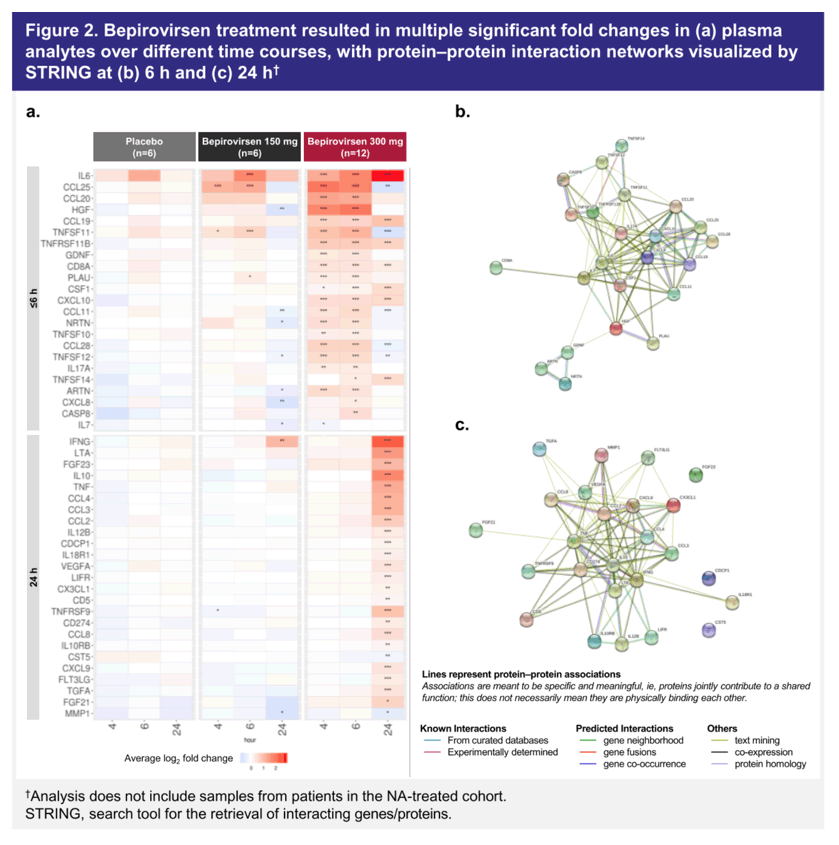

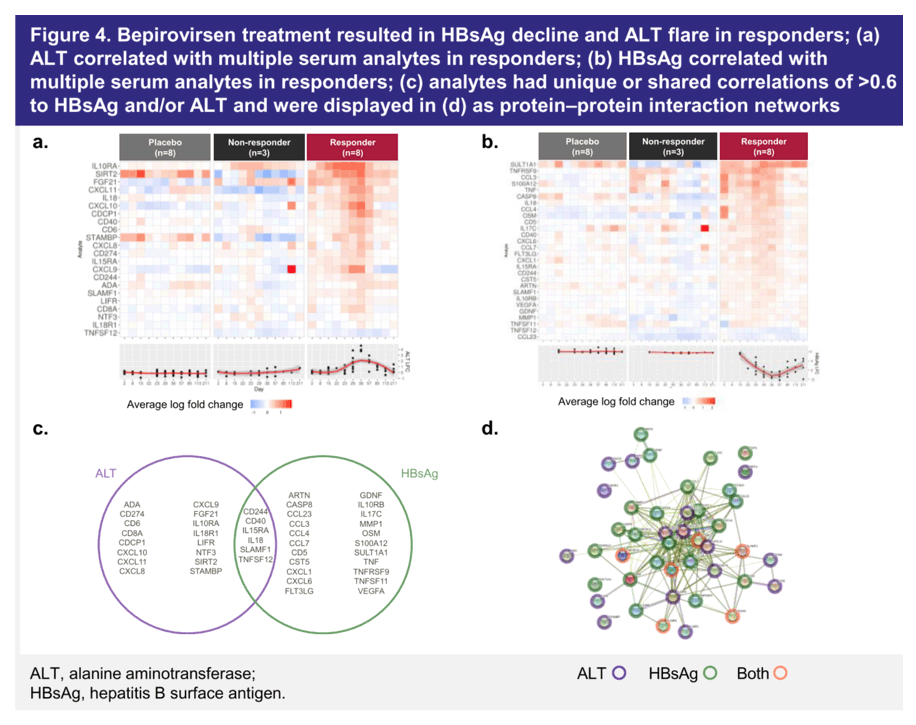
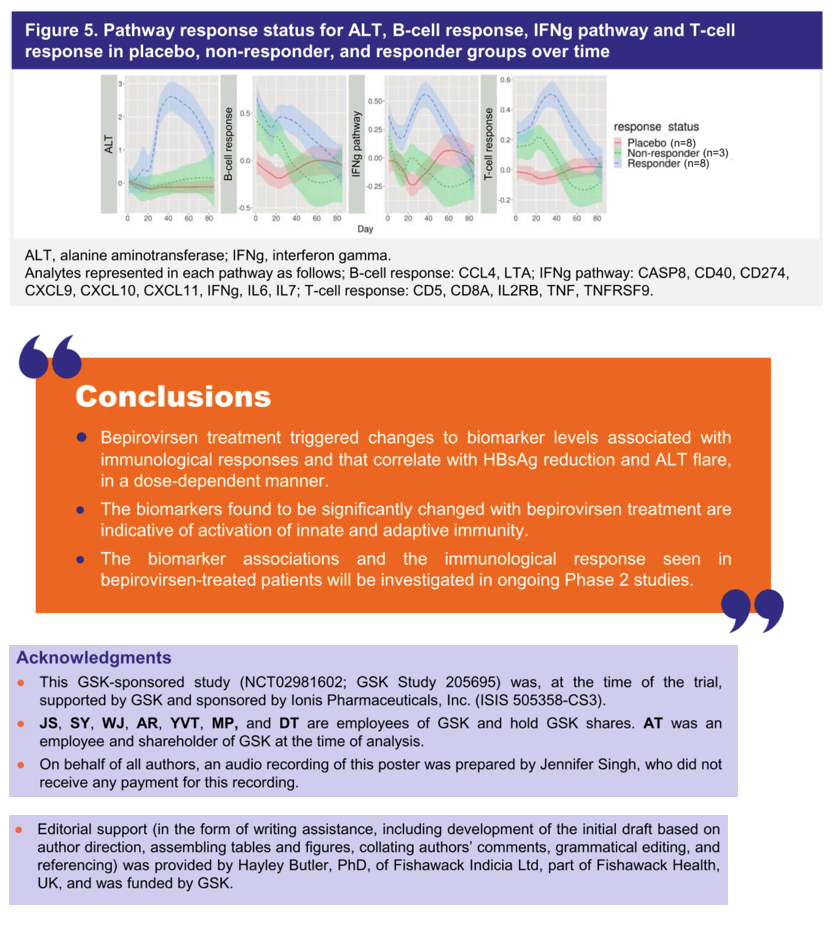
|
| |
|
 |
 |
|
|